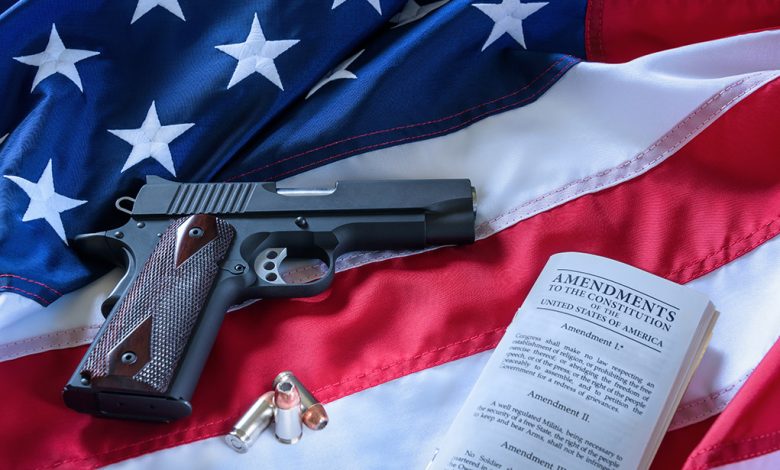The Second Amendment: From Founding Principle To Modern Battleground

We take a closer look at the Second Amendment, from its original intent to the issues of later interpretations.
The Second Amendment of the United States Constitution is one of the most fiercely debated and passionately defended provisions in American law. Enshrined in the Bill of Rights, it declares: “A well regulated Militia, being necessary to the security of a free State, the right of the people to keep and bear Arms, shall not be infringed.”
While only 27 words in length, its meaning, scope and application have been the subject of centuries of legal, political and cultural debate.
The Second Amendment’s Origins And Founding Intent
The Second Amendment was ratified in 1791, part of the original Bill of Rights demanded by Anti-Federalists who feared the potential tyranny of a centralized government. Not trusting that the newly formed government would abide by its limited, prescribed powers, they wanted explicit protections for individual liberties—including the right to self-defense.
At the time, English common law, as articulated by jurists like William Blackstone, already recognized a natural right to resist oppression and defend oneself. The Founders believed this right predated the Constitution and therefore should be preserved—not granted—by the Second Amendment.
The language of the amendment reflects this mindset. It doesn’t create a right; it recognizes one. That’s why it says, “the right of the people,” suggesting an existing, inalienable liberty. Importantly, the phrase “a well regulated militia” has often been misunderstood. In the 18th century, “well regulated” meant well trained, not tightly controlled by the government, and “militia” referred to able-bodied citizens, not a standing army.
Limited Reach—At First
Initially, the Second Amendment applied only to actions of the federal government. States were free to regulate firearms as they saw fit. Indiana, for example, included its own version in its state constitution: “The people shall have a right to bear arms for the defense of themselves and the State.” This dual protection remained largely uncontested for decades, in part because federal firearms regulation was virtually nonexistent.
That changed in the 20th century, beginning with the National Firearms Act of 1934, passed in the wake of gangland violence during Prohibition. It imposed taxes and registration requirements on certain weapons like machine guns and short-barreled rifles. This law led to the Supreme Court’s 1939 decision in United States v. Miller, which upheld the act in a confusing and often misinterpreted opinion. Many lower courts would later use Miller to argue that the Second Amendment protected only a “collective” right related to militia service.
The Modern Legal Revolution
The tide began to shift in 2001 with United States v. Emerson, when the Fifth Circuit Court ruled that the Second Amendment protected an individual right. This created a circuit split, setting the stage for the Supreme Court to intervene.
That happened in 2008, with the landmark case District of Columbia v. Heller. In a 5-4 decision, the Court confirmed that the Second Amendment protects an individual’s right to possess firearms, particularly for self-defense within the home. It was a momentous ruling but limited in scope: The case involved Washington, D.C.—a federal enclave—not a state.
The Court addressed that gap two years later in McDonald v. City of Chicago (2010), incorporating the Second Amendment against the states via the Fourteenth Amendment. This meant that state and local governments were now bound by the same constitutional limits as the federal government regarding the right to keep and bear arms.
Expansion And Clarification in Bruen
Despite Heller and McDonald, many courts continued to uphold gun restrictions using “interest balancing”—weighing the government’s interest against individual rights. That changed dramatically in 2022 with New York State Rifle & Pistol Association v. Bruen. The Court rejected interest balancing entirely and clarified the standard that should apply in Second Amendment cases: gun laws must be consistent with the text, history, and tradition of the Second Amendment. If there wasn’t an analogous restriction at the time of the founding, the law is likely unconstitutional.
The Bruen decision also distinguished between the right to “keep” arms (possession) and to “bear” arms (carry). It confirmed that the Second Amendment covers both, including carrying firearms in public for self-defense.
The Rahimi Decision: A Retreat?
Most recently, the Court addressed United States v. Rahimi (2024), involving a federal law that prohibits firearm possession by individuals subject to domestic violence restraining orders. In an 8-1 decision, the Court upheld the law, finding it consistent with the nation’s historical tradition—despite the absence of a close founding-era analog that disarmed individuals without a criminal conviction.
Critics, like me, argue that Rahimi waters down the Bruen standard by using historical “analogs” that are only loosely similar, such as surety laws and laws against “affrays” (going armed in a way that terrified the public). Justice Clarence Thomas, the lone dissenter, warned that mixing historical justifications from different laws to justify modern restrictions undermines the originalist framework the court adopted in Bruen.
What’s Next?
The future of Second Amendment jurisprudence is uncertain. Challenges are already underway against bans on so-called “assault weapons,” restrictions on magazine capacity, and controversial ATF regulations such as those governing pistol braces. The outcome of these cases will hinge on how faithfully courts apply the methodology clarified in Bruen—and whether they adhere to the constitutional principle that rights are not privileges granted by the state but liberties inherent to the people.
As it stands, the Second Amendment continues to be forged—sometimes strengthened, sometimes tested—by each new ruling. Its history is a reminder that freedom is not preserved passively; it is upheld by vigilance, debate and, at times, resistance.
Editor’s Note: This article originally appeared in the June 2025 issue of Gun Digest the Magazine.
More On Gun Control And The Second Amendment:

Next Step: Get your FREE Printable Target Pack
Enhance your shooting precision with our 62 MOA Targets, perfect for rifles and handguns. Crafted in collaboration with Storm Tactical for accuracy and versatility.
Subscribe to the Gun Digest email newsletter and get your downloadable target pack sent straight to your inbox. Stay updated with the latest firearms info in the industry.







